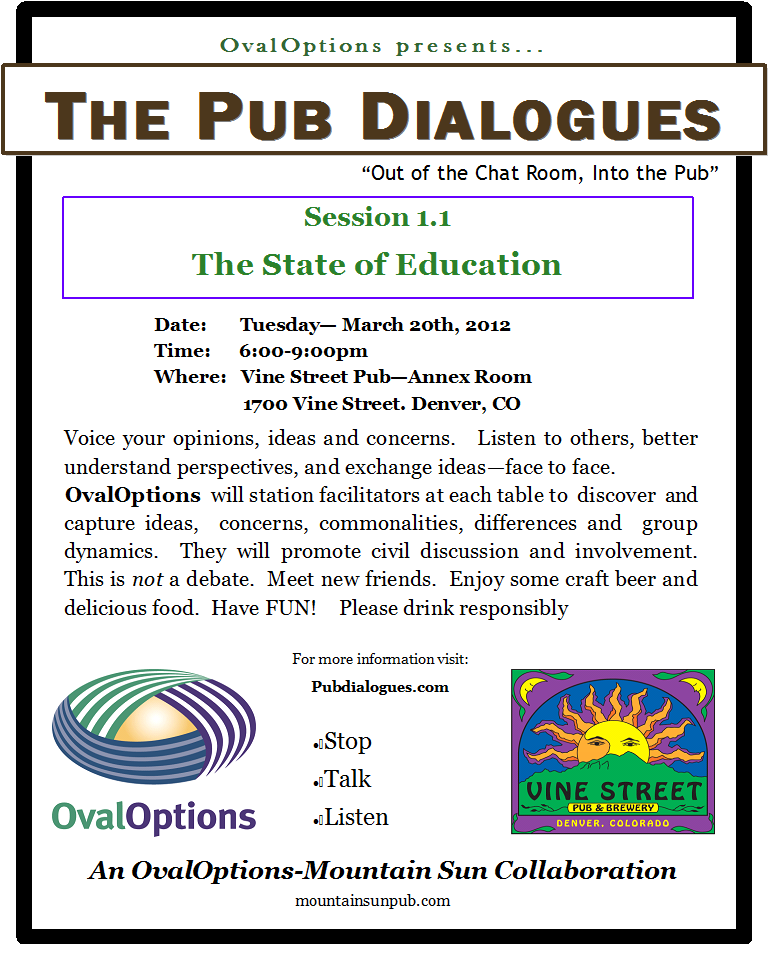Branding is an important aspect of any business and craft brewing is no exception. There are two main complications craft breweries face in branding their product. One is, what happens when two breweries share the same, or similar, names, logos or images? The other is coming up with a unique brand in the first place, which is often difficult and time-consuming task. A recent NPR article highlights this challenge; 3,000+ breweries equals a short list of available names and logos. But this is a symptom of an underlying issue.It is not so much that craft breweries are running out of names, but rather that they have not realized their creative potential to achieve a unique brand. This limitation makes the branding process unnecessarily difficult and time-consuming. Engaging a third party facilitator during the brainstorming process helps tap the brewery team’s imagination, ideas and cooperation to overcome the "short list" challenge.A skilled facilitator enables the parts of a craft brewery team to strengthen its whole. Each member can voice their concerns, articulate ideas and discover new ones, and examine decisions. As many minds are better than one, a good brainstorming session will see many ideas, good and bad, thrown around openly. Sometimes, seemingly silly ideas can serve as a catalyst for generating great ideas. Facilitation vets all ideas and navigates the group towards a collective and creative result.An outside facilitator grants the additional benefits of offering a different perspective and minimizing the restraints of groupthink. During facilitation, each member’s voice is heard, clarified and considered by all. No one is persuaded to think a certain way, or needs to worry about backlash from saying something different. A day’s worth of group facilitation can help a craft brewery achieve uniqueness and establish a name for itself for years to come.This does not guarantee smooth sailing through trademark waters, however. There is no clear distinction between similarity and difference, and this gray area varies throughout the industry and legal circles. One may see a name or logo as unique, another may see the same name or logo as influenced by their name or logo. A trademark dispute can be an ugly, expensive and daunting prospect. A common scenario sees a craft brewery requesting another craft brewery to change a name or design. If no conciliation is reached, then they retain legal counsel to send a cease and desist letter. Well, nothing will escalate a dispute quicker than a C/D letter. It is worrisome to receive anything in “legalese”. Once lawyers are involved, people tend to coil up into a defensive position, and this can cut off communication and block creative solution generation, not to mention engaging an expensive struggle. And if such dispute hits social media, then a firestorm erupts.But there are other steps unseen and not usually taken. The next step should include at least a call to a mediator before securing legal counsel (this does not mean that legal counsel must be excluded). While (most) attorneys advocate for their client, a mediator advocates for the process of mediation. That is, a mediator's focus is helping people communicate effectively, openly and in a safe space. While a settlement is a goal, it does not drive the mediation, because a mediation's objective is for the parties to develop a settlement of their choosing. Nothing is adjudicated or dictated; it's the parties' agreement, helped along by a neutral.Even if a settlement is not reached, mediation has two main benefits. The first is the opening of communication lines. Sitting face to face often changes the dynamics of a relationship that phone and email preclude. This can strengthen, maintain and establish personal relationships, which make collaboration easier.The second benefit is a "willingness to mediate". Sometimes, one party will agree to mediate and the other will not. If this happens, the first party will receive a letter stating that, yes, they tried to set up mediation and the other party was unwilling. This says to a judge (and the public) that one party was willing to talk it out, but the other was not.Avoiding costly, lengthy and damaging trademark disputes starts from within the brewery, not the ostensibly finite list of potential names. How a brewery team thinks is just as important as what it thinks. How the team communicates, within itself and with others, is just as important as what it communicates. Facilitation and mediation are more than feel-good, idealistic, notions. They can save a company tens of thousands of dollars and improve its overall image, atmosphere, communications and business.----------------------------------------------------


